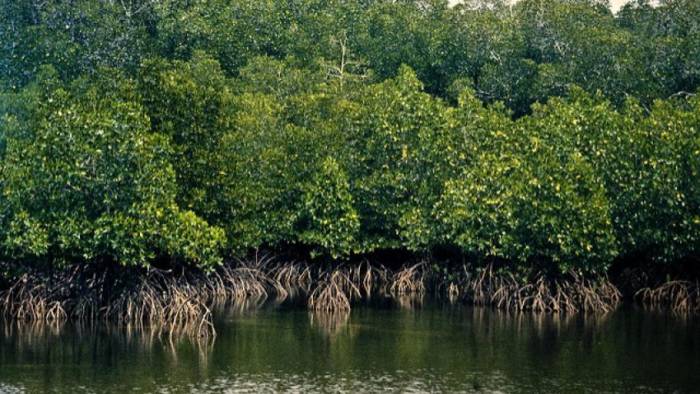By Kimani Wiseman
Take a trip to the beach and you would enjoy the golden sunshine, the sounds of sea birds flying over the ocean, the exquisite sounds of waves crashing on the shore.
It is a wonderful place where you will find tranquillity to brighten your day, and make you feel as if you are in paradise.
There are some very important trees that grow along the coastline that are taken for granted. These trees are mangroves.
Mangrove is a woody tree or shrub that lives along sheltered coastlines within the tropic or subtropical latitudes. The word “mangrove” is derived from the Portuguese word, mangue which means “tree”, and the English word “grove”, which is used for trees and shrubs.
Mangroves are very important trees in our ecosystem because: they remove carbon dioxide from the atmosphere, alleviating “global warming and climate change”. According to a BBC news report on Jan. 8, 2019, the United States carbon dioxide emissions rose by 3.4 per cent in 2018, and also the United States is the world’s second largest emitter of green house gases.
Environmental scientists have discovered that keeping more mangroves intact, allowed them to avoid the release of around 13 million metric tonnes of carbon dioxide into the atmosphere, which is equivalent to removing 344,000 cars from the road each year.
Mangroves can mitigate against damage caused by hurricanes and storms. Mangrove forests reduce the height of storm surges and flooding by absorbing wave energy through their dense roots and stems.
When the tsunami struck India’s southern state of Tamil Nadu on Dec. 26, 2004, areas in Pichavaram and Muthupet with dense mangroves suffered fewer human casualties and less damage to property, compared to areas without mangroves. Mangroves also prevent coastal erosion by stabilising sediments with their tangled root systems. They maintain water quality and clarity by filtering pollutants and trapping sediments originating from land, thus ensuring our coral reefs are healthier. They are also a habitat for shrimps, crustaceans, molluscs, fishes, and birds.
Humans are the reason why mangroves are under threat. Fifty per cent of the world’s mangroves have already disappeared in the past half century. Indonesia, Mexico, Pakistan, Papua New Guinea, and Panama, recorded the largest losses of mangroves during the 1980s. A total of one million hectares were lost in these five countries. Mangrove forests have been seen as unproductive and smelly, and are cleared to make room for agricultural land, human settlements, harbours, industrial areas, and tourism sites.
Mangrove wood is resistant to rot and insects, making it extremely valuable, hence it is commercially harvested for pulp, wood chip, and charcoal production.
The building of dams and irrigation reduces the amount of water reaching mangrove forests, which changes the salinity level of water in the forest. If salinity becomes too high, the mangroves cannot survive.
The next time you visit the beach and you spot a mangrove forest, instead of “over exploiting” them, appreciate the good job that they are doing in our ecosystem.







Very interesting and informative article. I applaud the editor for publishing such an important article.
As far as I know, there are no mangrove areas left in SVG. Also, the ecologically critical Kings Park forest is being reduced by the day while the even more critical mountainous interior continues to be cut down to grow weed.
As for this and the previous Mitchell regime, preservation of the environoment is an issue of no practical (as opposed to rhetorical) concern.